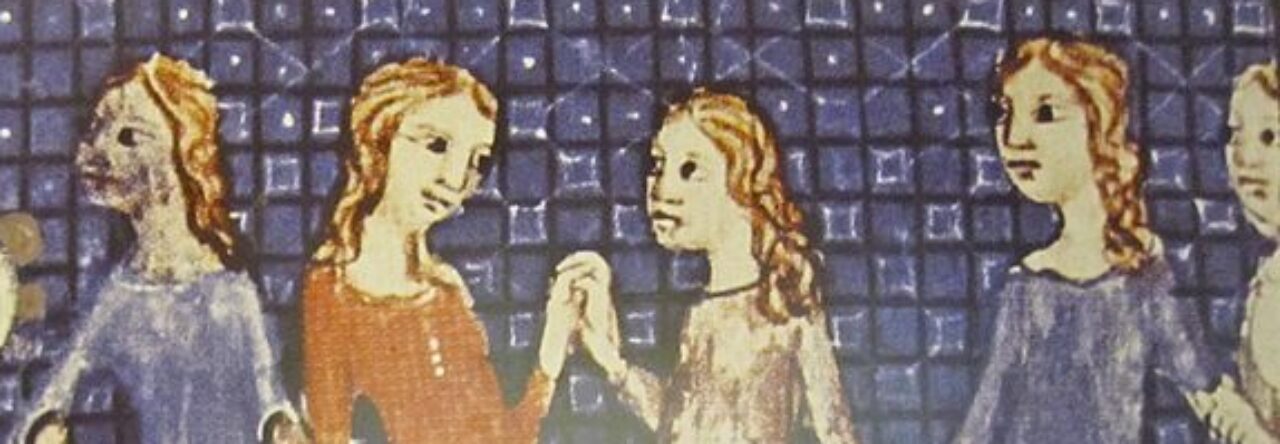Today’s topic is the second part of our discussion about prescribed ideas regarding women in medieval Europe. This time we turn to look at religion and law. We’ll consider concepts from Christianity as well as Roman law, canon law, and customary law. At the end of this class, we’ll pull back to think about how the combination of ideas from ancient Greek and Roman philosophy and medicine, Christianity, and various legal concepts constructed a gendered ideology about women that prevailed across medieval Europe.
To Watch
Powerpoint slides:
To Read
Selections from the Old and New Testament
Selections from St. Augustine
Gratian “Canon Law on Marriage”
Decrees from the Fourth Lateran Council
“Spanish Laws”
All available here:
To Do
This week, we’re going to continue our analysis of prescriptive sources (these refer to historical sources that prescribe (or attempt to mandate) women’s lives in different ways. Remember that these sources are THEORETICAL–they tell us how those in charge (the patriarchy) wanted women to behave but they don’t necessarily mean that women behaved that way or fully believed those ideas. At the same time, these ideas meant different things for different women, depending upon their socio-economic status, religion, and race.
Remember to use the tools outlined here in analyzing these sources:
In person students
For those signed up to lead discussion for this class, you are in charge of developing discussion questions. You can also create activities for the class to engage in as a means of exploring the assigned readings.
Online students
Questions will be posted in your chatboard channels as a means of starting discussion about the assigned readings. Students who are signed up to lead the online discussion are responsible for monitoring your classmates’ comments and responding to them to keep discussion going. If there are questions that arise which I can help with, don’t forget to tag me! @dwl
Comments should be posted before Thursday May 12th at midnight.
